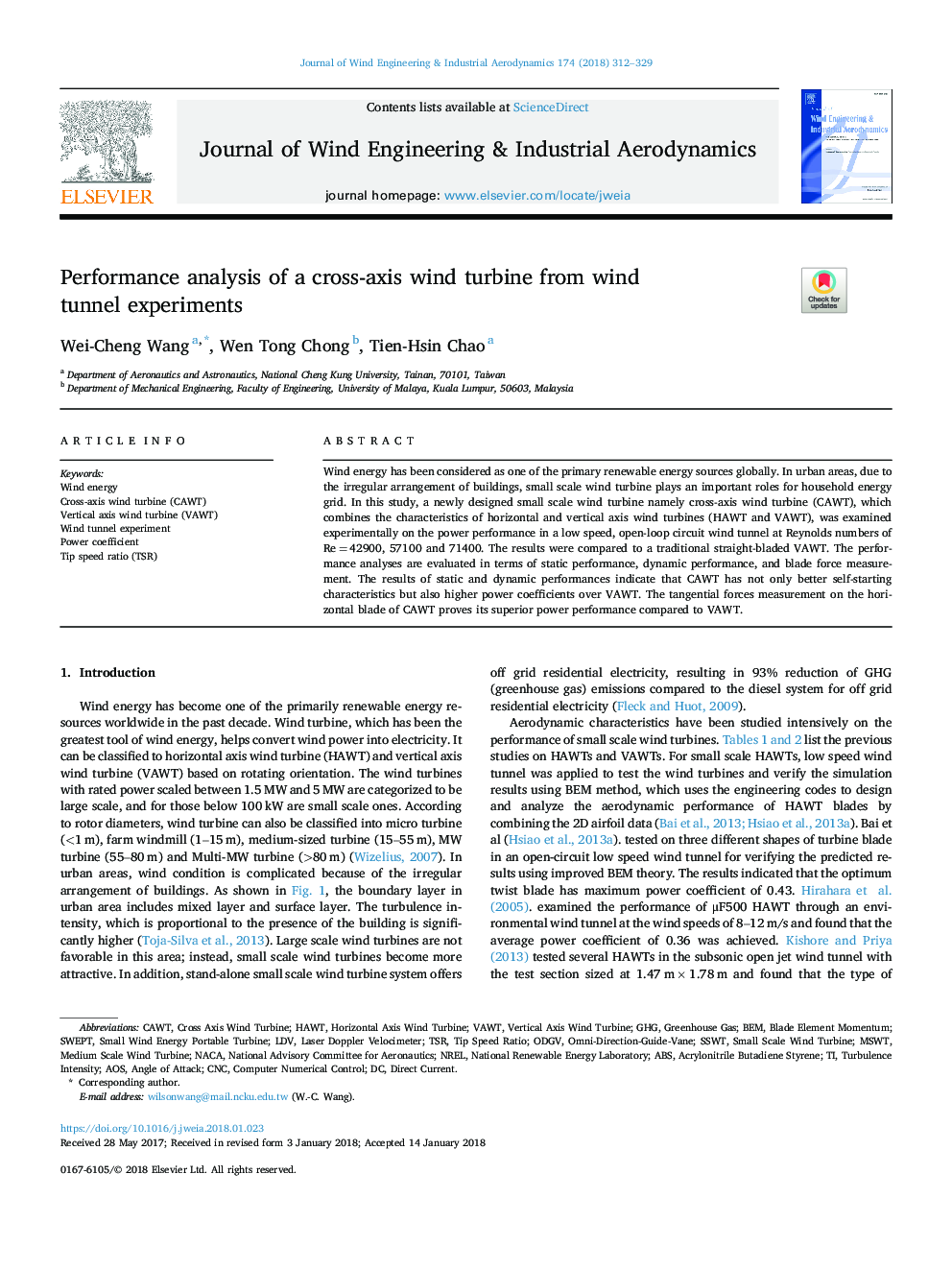| Article ID | Journal | Published Year | Pages | File Type |
|---|---|---|---|---|
| 6757098 | Journal of Wind Engineering and Industrial Aerodynamics | 2018 | 18 Pages |
Abstract
Wind energy has been considered as one of the primary renewable energy sources globally. In urban areas, due to the irregular arrangement of buildings, small scale wind turbine plays an important roles for household energy grid. In this study, a newly designed small scale wind turbine namely cross-axis wind turbine (CAWT), which combines the characteristics of horizontal and vertical axis wind turbines (HAWT and VAWT), was examined experimentally on the power performance in a low speed, open-loop circuit wind tunnel at Reynolds numbers of Reâ¯=â¯42900, 57100 and 71400. The results were compared to a traditional straight-bladed VAWT. The performance analyses are evaluated in terms of static performance, dynamic performance, and blade force measurement. The results of static and dynamic performances indicate that CAWT has not only better self-starting characteristics but also higher power coefficients over VAWT. The tangential forces measurement on the horizontal blade of CAWT proves its superior power performance compared to VAWT.
Keywords
Small scale wind turbineVAWTHAWTCNCNACALDVTSRGHGABSNRELWind tunnel experimentNational Renewable Energy Laboratoryacrylonitrile butadiene styreneWind energyAOSHorizontal axis wind turbineVertical axis wind turbineVertical axis wind turbine (VAWT)Direct CurrentBlade element momentumBEMAngle of attackTurbulence intensityPower coefficientLaser Doppler velocimeterTip speed ratiocomputer numerical controlGreenhouse gas
Related Topics
Physical Sciences and Engineering
Energy
Renewable Energy, Sustainability and the Environment
Authors
Wei-Cheng Wang, Wen Tong Chong, Tien-Hsin Chao,
